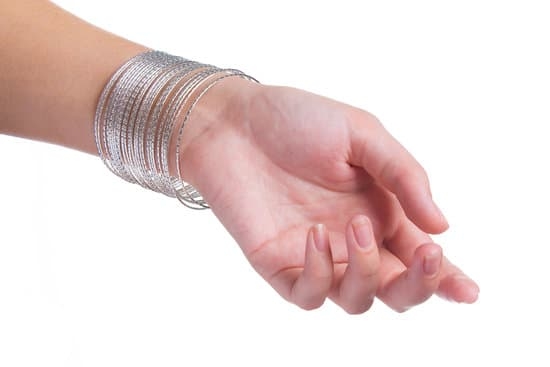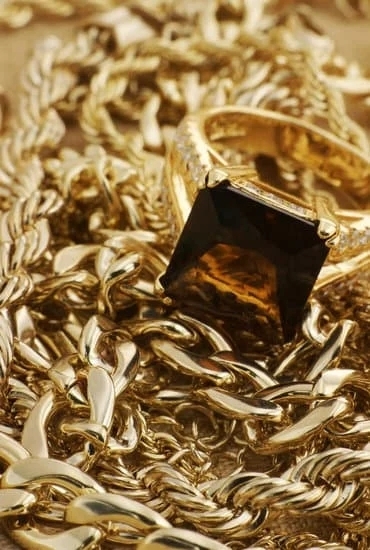History of old pawn jewelry native american dates back centuries, reflecting the cultural heritage and artistry of indigenous tribes. The intricate designs and craftsmanship of native jewelry hold deep significance in the Native American culture. From traditional to contemporary designs, old pawn jewelry is not just adornment but serves as an embodiment of symbolism, tradition, and spirituality. This article explores the roots, significance, evolution, and impact of old pawn jewelry in Native American societies.
The origins of old pawn jewelry can be traced back to the ancestral skills and techniques passed down through generations of Native American artisans. These pieces showcase remarkable craftsmanship and are often adorned with symbols that hold spiritual and cultural meanings for the tribes that create them. Through this exploration, we aim to highlight the role of old pawn jewelry in preserving the rich heritage of Native American artistry.
Furthermore, this article delves into the economic, social, and spiritual impact of old pawn jewelry within Native American societies. It also sheds light on renowned native artisans who have contributed to the legacy of this unique form of art. Additionally, we examine how old pawn jewelry continues to be a valuable collectible item in today’s market while emphasizing the importance of preserving and celebrating its historical significance.
Overall, this article aims to provide a comprehensive understanding of the history and cultural importance of old pawn jewelry within Native American communities while recognizing it as a symbol of resilience and creativity passed down through generations.
The Origins of Old Pawn Jewelry
Old Pawn Jewelry traces its roots to the rich history of Native American artistry, reflecting the cultural and spiritual traditions of Indigenous tribes. The origins of this unique style of jewelry-making can be traced back hundreds of years, steeped in the customs and beliefs of Native American communities. From Navajo silverwork to Zuni stone inlay, old pawn jewelry is a testament to the craftsmanship and creativity of Indigenous artisans.
The history of old pawn jewelry native american dates back to the late 19th century when the Navajo, Hopi, Pueblo, Zuni, and other tribes began incorporating silver into their traditional designs. The introduction of metalworking tools by Spanish settlers enabled Native American artisans to meld their distinctive styles with new materials. This fusion gave rise to the iconic pieces that are now cherished as old pawn jewelry.
The use of turquoise, coral, onyx, and other semi-precious stones in old pawn jewelry reflects the deep connection between Native American culture and the natural world. Each piece is imbued with symbolism and significance, often representing elements from tribal folklore or spiritual beliefs. As such, old pawn jewelry serves as a tangible link to the past while also embodying enduring traditions within Indigenous communities.
| Native American Tribe | Significant Materials Used |
|---|---|
| Navajo | Silver, turquoise |
| Zuni | Silver, coral, onyx |
| Hopi | Silver overlay techniques |
The Significance of Old Pawn Jewelry in Native American Culture
In Native American culture, jewelry is often adorned with symbols that hold specific meanings. For example, the use of turquoise in old pawn jewelry represents protection, power, and good fortune in many tribes. Other stones, such as coral, onyx, and spiny oyster shell, also carry symbolic significance and are incorporated into designs to convey messages related to nature, spirituality, and tribal identity.
Furthermore, the tradition of crafting old pawn jewelry is a way for Native American artisans to connect with their ancestors and preserve their cultural heritage. Each design element, from the intricate patterns to the choice of materials, reflects the stories and traditions that have been handed down through oral histories within their communities.
Moreover, old pawn jewelry plays a vital role in ceremonial customs and rituals within Native American societies. Certain pieces are worn during significant events such as weddings, coming-of-age ceremonies, or spiritual gatherings as a way to honor tradition and invoke blessings from ancestral spirits. This demonstrates the enduring importance of old pawn jewelry as more than just adornment; it serves as a tangible link to the past and a conduit for keeping cultural practices alive for future generations.
| Symbolic Stone | Meaning |
|---|---|
| Turquoise | Protection, power, good fortune |
| Coral | Spiritual balance and harmony |
| Onyx | Strength and self-confidence |
| Spiny Oyster Shell | Connection to ocean energy and transformation |
Evolution of Native American Jewelry
The evolution of Native American jewelry has been a reflection of the changing times, but it has also held onto its traditional roots. From the use of natural materials like turquoise, silver, and coral to incorporating contemporary designs, old pawn jewelry has successfully adapted to modern tastes while preserving its cultural significance.
The evolution of Native American jewelry can be seen in the transition from traditional to contemporary designs. Traditional Native American jewelry often featured intricate beadwork, hand-stamped silver designs, and bold turquoise stones. These pieces were closely tied to tribal customs and beliefs, serving as both decorative and ceremonial adornments. As time passed, artisans began incorporating new techniques and materials into their work, leading to the rise of contemporary designs that appeal to a wider audience.
In today’s market, collectors and enthusiasts can find a wide range of Native American jewelry that spans from traditional to contemporary styles. Some artisans have chosen to preserve the craftsmanship of old pawn jewelry by creating pieces that stay true to ancient techniques, paying homage to the history and cultural heritage. On the other hand, there are artists who have innovated with new shapes, colors, and textures in their creations while still acknowledging their ancestral methods.
- The incorporation of modern elements into traditional designs
- The use of sustainable materials in contemporary Native American jewelry
- The shift towards more minimalist and versatile pieces in today’s market
The Role of Old Pawn Jewelry in Native American Societies
Old pawn jewelry has played a significant role in Native American societies, impacting various aspects of their lives including economic, social, and spiritual. The craftsmanship and significance of old pawn jewelry have made it an integral part of the Native American culture for centuries.
Economic Impact
Old pawn jewelry has served as both a form of currency and a means of economic stability for many Native American communities. In the past, these pieces were often used as collateral for loans or traded for goods and services within tribal communities. This practice not only provided financial security but also contributed to the overall economy of Native American societies.
Social Significance
In addition to its economic impact, old pawn jewelry holds great social significance within Native American communities. These intricate pieces are often passed down through generations, serving as heirlooms that carry the stories and history of their ancestors. Furthermore, they are also worn during traditional ceremonies and gatherings, symbolizing an individual’s connection to their heritage and community.
Spiritual Importance
Beyond its economic and social impact, old pawn jewelry is deeply rooted in Native American spirituality and beliefs. Many of these pieces are adorned with symbols and motifs that hold spiritual significance, representing concepts such as protection, abundance, and connection to the natural world. For individuals within these communities, wearing old pawn jewelry is often seen as a way to honor their ancestors and connect with the spiritual realm.
The profound influence of old pawn jewelry on Native American societies underscores the importance of preserving this unique art form for future generations to appreciate and cherish.
Famous Native American Jewelry Artisans
Native American jewelry has a rich history that dates back centuries, with old pawn jewelry playing a significant role in preserving the cultural heritage of indigenous communities. Throughout history, master craftsmen have played a crucial role in creating exquisite pieces of old pawn jewelry that serve as an embodiment of tradition, artistry, and spirituality. These artisans have dedicated their lives to honing their craft and passing down their knowledge from generation to generation.
The Legacy of Master Craftsmen
The craftsmanship behind old pawn jewelry is a testament to the skill, dedication, and passion of Native American artisans. Each piece is meticulously handcrafted using traditional techniques that have been passed down for centuries, resulting in unique and meaningful works of art. These master craftsmen are not only skilled in shaping metals and stones but also possess a deep understanding of the cultural significance and symbolism behind each piece they create.
Celebrating Cultural Heritage
Through their intricate designs and expert craftsmanship, famous Native American jewelry artisans have played a vital role in preserving the cultural heritage of their communities. Each piece of old pawn jewelry tells a story – whether it’s depicting symbols of nature, spirituality, or tribal traditions. By honoring these master craftsmen and their work, we celebrate the resilience and creativity of indigenous cultures throughout history.
Passing Down Traditions
It is crucial to recognize the importance of passing down traditional craftsmanship and techniques to future generations. By teaching younger members of their communities the artistry behind old pawn jewelry making, these master craftsmen ensure that the legacy of Native American jewelry will continue to thrive for years to come. Through education and apprenticeship programs, these artisans are not only preserving their cultural heritage but also creating opportunities for economic empowerment within their communities.
Old Pawn Jewelry in Today’s Market
Old pawn jewelry holds a significant place in the history of Native American artistry. The intricate designs and craftsmanship not only represent the cultural heritage of indigenous communities but also have great value in today’s market. Collectors and enthusiasts seek out old pawn jewelry for its historical significance and unique beauty. Whether it’s the exquisite turquoise pieces of the Navajo or the intricate silverwork of the Hopi, these pieces are cherished for their craftsmanship and cultural importance.
In today’s market, old pawn jewelry serves as a valuable investment for collectors. The rarity and historical significance of these pieces make them highly sought after by those who appreciate Native American art and culture.
Some collectors view old pawn jewelry as a way to preserve a piece of history while also making a sound financial investment. As a result, the demand for authentic old pawn jewelry remains strong, with collectors willing to pay a premium for well-preserved pieces that embody the traditions and craftsmanship of Native American artisans.
Preserving Native American heritage is another important aspect of old pawn jewelry in today’s market. By collecting and investing in these pieces, individuals are contributing to the preservation of indigenous cultures and traditions.
Many collectors make an effort to learn about the history and symbolism behind each piece they acquire, fostering a deeper appreciation for Native American artistry. In addition to preserving the physical artifacts, investing in old pawn jewelry also helps support contemporary Native American artisans who continue to carry on traditional jewelry-making techniques.
- Reasons to collect old pawn jewelry
- Historical significance
- Cultural preservation
- Investment potential
- Market trends
- Growing demand for authentic pieces
- Increasing value of well-preserved items
- Importance of authenticity in today’s market
- Impact on Native American communities
- Support for traditional artisans
- Cultural preservation through collectors’ efforts
- Economic significance for indigenous populations
Preserving the Legacy
In conclusion, the history of old pawn jewelry holds a special place in the rich cultural heritage of Native American artistry. It is a tradition that has been passed down through generations, reflecting the creativity, craftsmanship, and spiritual significance of Native American culture. The origins of old pawn jewelry can be traced back to ancient traditions and have evolved into contemporary designs that continue to captivate admirers around the world.
The significance of old pawn jewelry in Native American culture goes beyond just adornment; it embodies symbolism and traditions that are deeply rooted in spiritual beliefs and customs. This beautiful art form has played a vital role in the economic, social, and spiritual aspects of Native American societies, making it an integral part of their heritage.
As old pawn jewelry continues to be cherished by collectors and enthusiasts worldwide, it is crucial to educate and celebrate its history. By preserving this legacy, we honor the master craftsmen behind these exquisite pieces and ensure that future generations understand and appreciate the cultural significance of Native American artistry. Through collecting, investing, and preserving old pawn jewelry, we contribute to the conservation of Native American heritage for years to come.
Frequently Asked Questions
What Does Old Pawn Mean in Native American Jewelry?
“Old pawn” in Native American jewelry refers to pieces that have been previously owned or used, typically as collateral for a loan in the past. These pieces often have unique historical and cultural significance.
What Is the Oldest Native American Jewelry?
The oldest Native American jewelry dates back thousands of years, with early examples found in ancient burial sites and archaeological digs. These pieces were crafted from materials like shell, stone, and bone.
How Can You Tell if Jewelry Is Navajo?
Recognizing Navajo jewelry often involves looking for specific design elements such as intricate silverwork, elaborate stamping or tooling, and the use of turquoise and other colorful gemstones. Additionally, many Navajo pieces are marked with the artisan’s hallmark or initials.

Welcome to my jewelry blog! My name is Sarah and I am the owner of this blog.
I love making jewelry and sharing my creations with others.
So whether you’re someone who loves wearing jewelry yourself or simply enjoys learning about it, be sure to check out my blog for insightful posts on everything related to this exciting topic!





